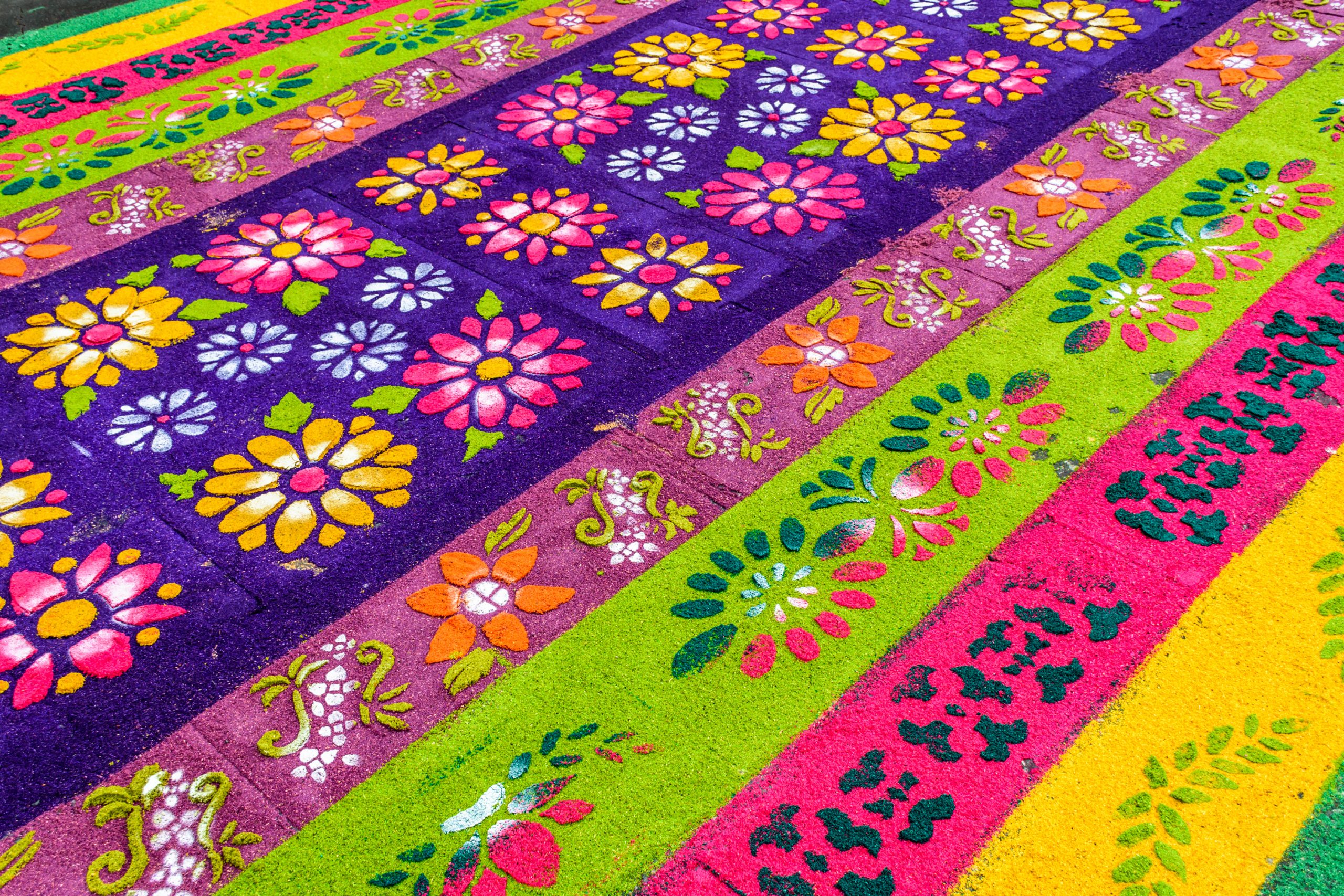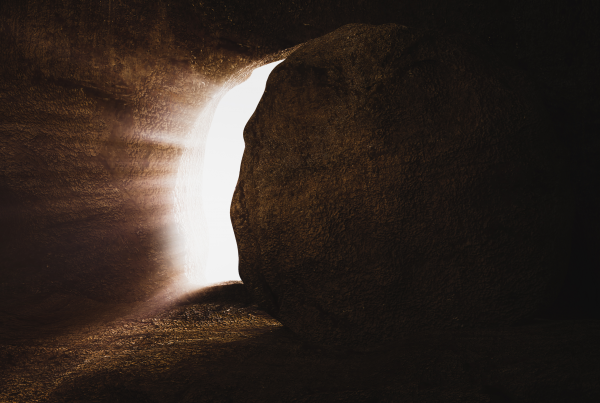Throughout Lent, the residents of Antigua craft alfombras, or “carpets,” colorful murals that decorate the streets for Holy Week. These complex projects are not the work of a professional artist. Instead, the community creates together. Neighbors lay sand to form a base on the cobblestones before arranging brightly dyed sawdust in intricate patterns. Flowers and native plants are placed on top to add dimension and fragrance. The finished product is a breathtaking design that engages all the senses and moves the heart to worship.
During Holy Week, devotees carry heavy floats of Jesus and the Holy Virgin of Sorrows. The alfombras guide the way, forming a path forward for the crowds to follow. Within a few minutes of the Palm Sunday processional, the intricate designs are destroyed. The feet of thousands of penitents spread the sawdust to the wind.
The community spends hours and hours creating something beautiful, only to have it washed away in a moment. This extravagance nags at our American practicality. Why don’t they walk around the alfombras? Are there enough photos of the design? How can we display this artwork in a museum? The Guatemalans aren’t the only faithful to make a seemingly extravagant and impractical sacrifice on Holy Week.
While Jesus was in Bethany in the home of Simon the Leper, a woman came to him with an alabaster jar of very expensive perfume, which she poured on his head as he was reclining at the table.
When the disciples saw this, they were indignant. “Why this waste?” they asked. “This perfume could have been sold at a high price and the money given to the poor.”
Aware of this, Jesus said to them, “Why are you bothering this woman? She has done a beautiful thing to me. The poor you will always have with you, but you will not always have me. When she poured this perfume on my body, she did it to prepare me for burial. Truly I tell you, wherever this gospel is preached throughout the world, what she has done will also be told, in memory of her.”
(Matthew 26:6-13)
We don’t know the name of this mystery woman, but the story reveals glimpses of her character. She followed Jesus into the home of Simon the Leper. This brave action would render her ceremonially unclean, but she chose to draw close to Jesus under the threat of stigma. We don’t know how this woman paid for this expensive perfume. Many scholars believe it was her dowry or life savings. Regardless, we understand it would have been an outlandish sacrifice. Unable to own property or livestock, many women were financially vulnerable. This woman demonstrated unbelievable trust by offering up her greatest asset. We see that the disciples do not understand her gift. Her sacrifice receives a sharp rebuke, “Why this waste?”
Jesus provides the answer: she is preparing his body for burial. Throughout the book of Matthew, Jesus predicts his death several times (Matthew 16:21; Matthew 17:22-23). This unnamed woman heard Jesus’ predictions of his coming death and sacrificed her financial freedom to honor him. Practically, this perfume likely would not last through the coming agony of Jesus’ trial, torture, and execution. Indeed, when Mary approaches the tomb on Easter morning, she carries burial spices. The jar of perfume is a lavish, love sacrifice. Impractical and extravagant in the extreme.
The disciples make a good point. This money certainly could have been used to provide for the needy. Jesus himself often exhorts his people to serve the poor (Matthew 25:31-46).
But Jesus does not rebuke her generosity. He accepts her gift and promises her story will be told: “wherever this gospel is preached throughout the world.”
Jesus calls us to perform surgery and build wheelchairs and feed the hungry. But he also accepts our colorful carpets. Our jars of perfume. The Sistine Chapel. He accepts his rightful honor and glory. As we prepare our hearts for Holy Week, may we remember the woman with her alabaster jar. We hope her story might inspire us to do something beautiful unto Christ.
We might craft an alfombra or a lavish meal. Paint a watercolor or sing as the sun rises over an empty tomb. As the gospel story is proclaimed throughout the world, may we remember her sacrifice and his and be glad.





